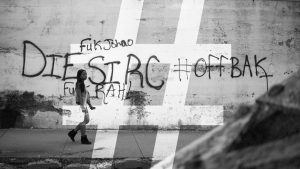Rod McCullom in Nature:
 In the middle of the day on 11 April 2014, a hooded gunman ambushed Gakirah Barnes on the streets of Chicago’s South Side. A volley of bullets struck her in the chest, jaw and neck. The 17-year-old died in a hospital bed two hours later. To many, her death was just another grim statistic from a city that has been struggling with gun violence. Last year, around 3,500 people were shot in Chicago, Illinois, of which 246 were aged 16 or younger; 38 of those children never celebrated another birthday. But Barnes’s death was unusual for several reasons. She was a young woman in an epidemic of violence that largely affects black men. She also had an Internet following. Barnes had a reputation as a ‘hitta’ — or killer — with rumours of at least two dead bodies to her credit. Although never charged with murder, she embraced the persona, posing in photos and videos with guns in her hands and making threats against rival gangs on Twitter. In a morbid modern irony, it’s likely that she revealed her location in real time to her killer through a tweet. Police have yet to charge anyone in connection with her murder.
In the middle of the day on 11 April 2014, a hooded gunman ambushed Gakirah Barnes on the streets of Chicago’s South Side. A volley of bullets struck her in the chest, jaw and neck. The 17-year-old died in a hospital bed two hours later. To many, her death was just another grim statistic from a city that has been struggling with gun violence. Last year, around 3,500 people were shot in Chicago, Illinois, of which 246 were aged 16 or younger; 38 of those children never celebrated another birthday. But Barnes’s death was unusual for several reasons. She was a young woman in an epidemic of violence that largely affects black men. She also had an Internet following. Barnes had a reputation as a ‘hitta’ — or killer — with rumours of at least two dead bodies to her credit. Although never charged with murder, she embraced the persona, posing in photos and videos with guns in her hands and making threats against rival gangs on Twitter. In a morbid modern irony, it’s likely that she revealed her location in real time to her killer through a tweet. Police have yet to charge anyone in connection with her murder.
Desmond Upton Patton was sitting in his office at the University of Michigan in Ann Arbor when he first saw the headlines about Barnes. The social worker had been studying ‘Internet banging’, or ‘cyberbanging’, the use of social media by gang-involved youths to challenge, taunt or threaten rivals1. The online disputes can often spill out into the streets as physical violence. Patton took a deep dive into Barnes’s archived Twitter timeline and discovered a treasure trove of social-media data — random thoughts as well as boasts, threats and violent imagery. But what surprised him most, he says, was the grief. “My pain ain’t never been told,” Barnes wrote after a friend was killed just weeks before her own death. What emerged from her timeline was a picture of a teenage girl who lived in a community steeped in violence, who was deeply hurt by it and who wanted revenge. Now at the Columbia School of Social Work in New York City, Patton thinks that social-media histories such as that of Barnes can offer ways to identify young people at risk of being involved in gun violence. He assembled an interdisciplinary group of researchers who use artificial-intelligence (AI) techniques to study the language and images in social-media posts to identify patterns of grieving and anger.
More here.
